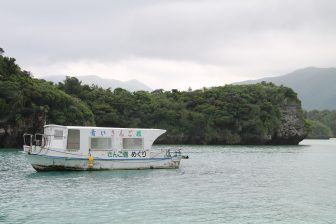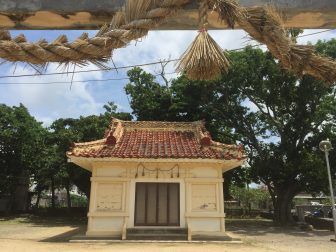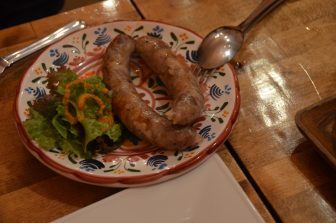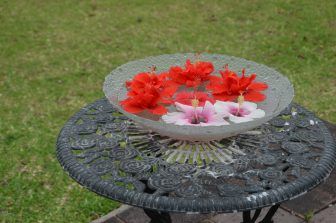
[ Apr.2017 ] On the second day on Ishigaki Island in Okinawa, Japan, it was sunny in spite of the forecast, so we bought hats and sunscreen and decided to go to Kabira Bay, one of the tourist sites on the island.
According to our guide book, it is a beautiful inlet with many small islands and although you cannot swim there, it is wonderful to see the colour of the sea which changes many times in a day.
But we did not know how to get there.
It seemed that most people rent a car on the island, so the book explains only how to move around by car.
We went to the bus terminal and found that there were buses to get there, but unfortunately the timing was not convenient for us.
So in the end, we took a taxi.
I mean we are adult enough to do that.
The taxi driver was very kind and gave us a lot of information about the island.
During the second world war, unlike the main island of Okinawa where they had severe battles, here on this island, they were hardly damaged by any fighting, but instead, “We suffered malarial mosquitoes which were brought in by Japanese troops” he said.
That was how he said, but on the internet, it says that the Japanese army forced the residents to evacuate to the area contaminated with malarial mosquitoes and in the end as many as 4000 people died from it.
Also the driver said that after people moved from the malaria contaminated area to the mountain area, Taiwanese people came and started living there.
They came with water buffaloes and taught the locals how to grow pineapples, so since then, the agriculture has developed on the island and canned pineapples became the main products for the island’s economy.
Now the main industry is tourism, though.
This driver’s surname was Ishigaki.
Apparently Ishigai is the fourth most common surname on Ishigaki island.
Another person later told us that on the island, there are many Maedas, written as 真栄田 whose characters are different from the ordinary Maeda(前田).
When we arrived at Kabira Bay, the weather changed and it was cloudy.
What a shame!
But we took the glass boat to see the view of the seabed anyway, which was the main thing to do here.
It was exactly the world we saw a few days ago at the aquarium at Kasai Rinkai Park in Tokyo.
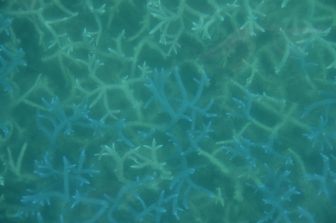
The company of the boat was “Blue Coral Reef” and we really saw the blue corals.
There were lumpy corals called Potato Coral as well as poisonous corals.
We saw the orange Clark’s anemonefish which my husband used to have in his tank.
Interestingly we learned that these fish were all born as male and the biggest one turns into female later.
That reminded me of a SF story called “The Left Hand of Darkness” by Ursula K.Le Guin which I read when I was very young.
After the boat, we walked along the bay and found a pearl shop.
This company succeeded in cultivating world first pearls in Black-lip Oysters.
There were many lovely accessories, but they were too expensive for me.

